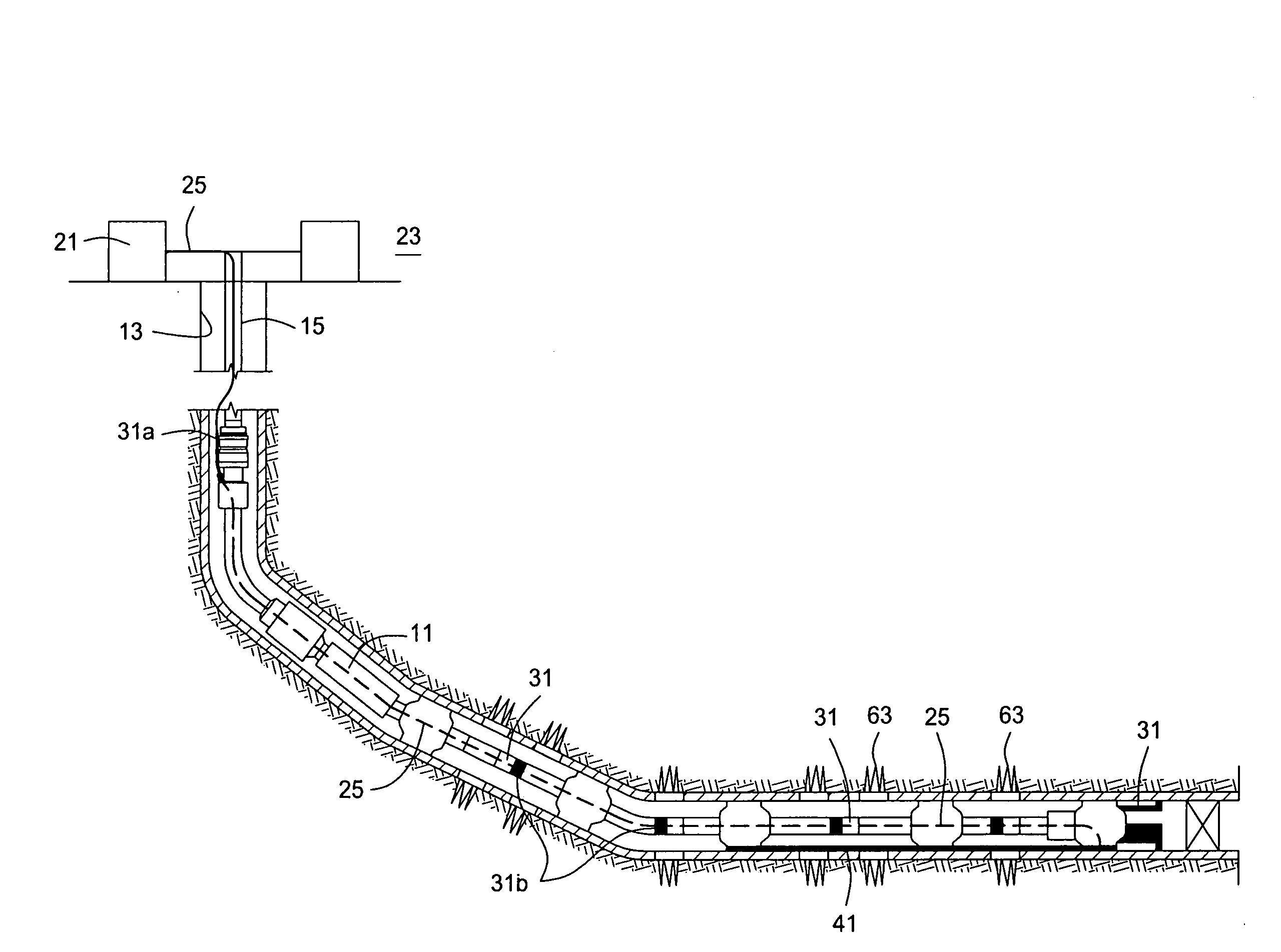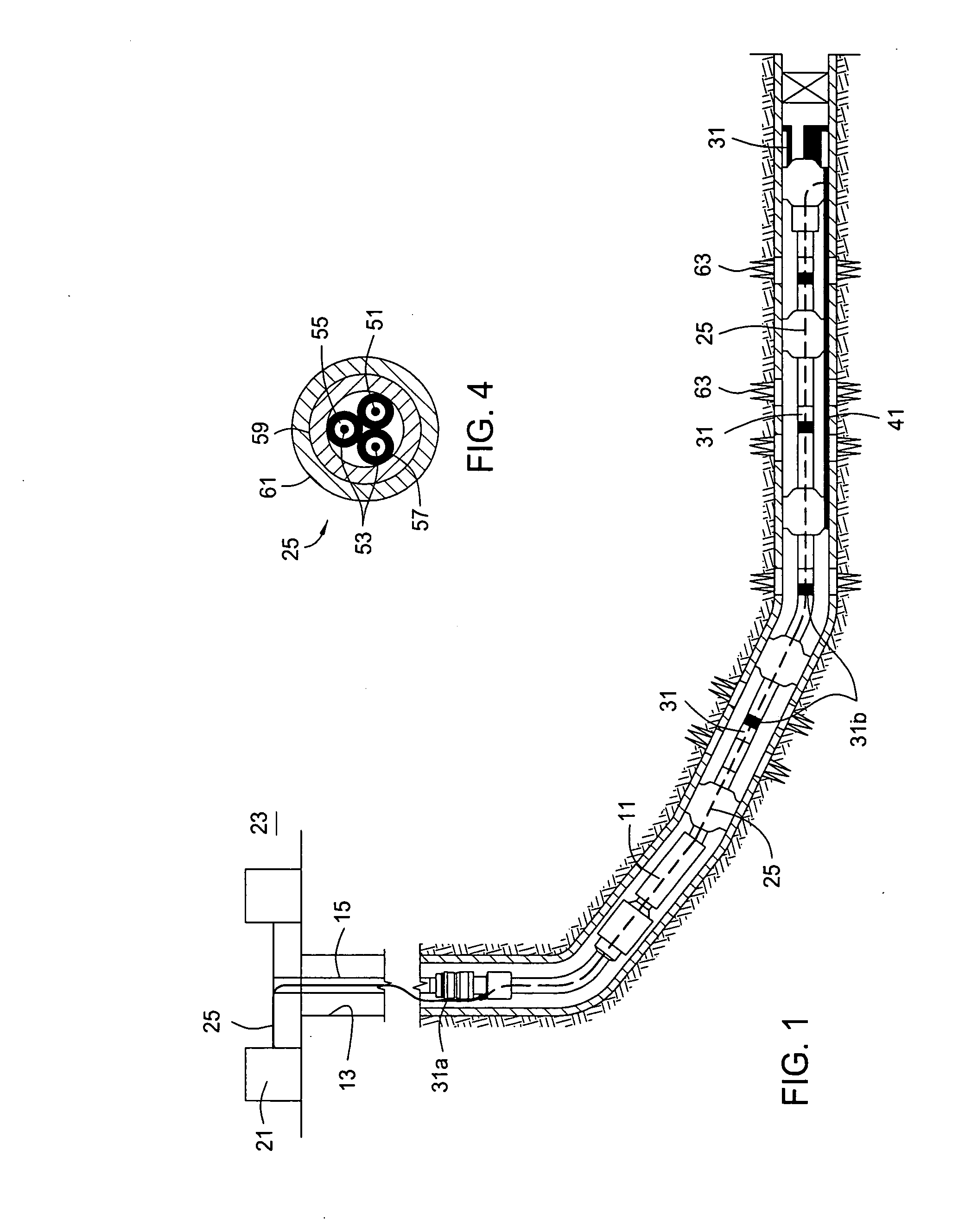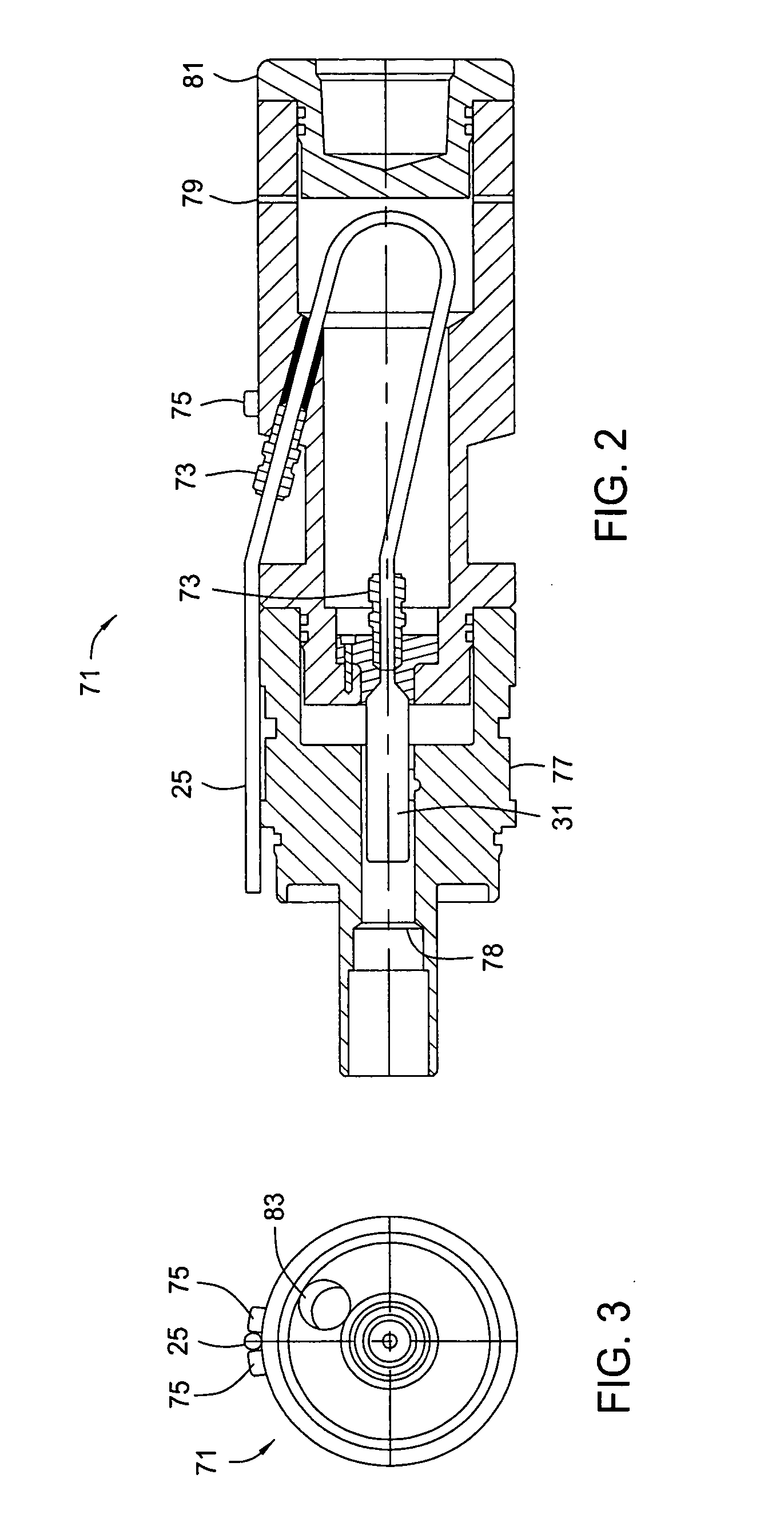System, method, and apparatus for downhole submersible pump having fiber optic communications
- Summary
- Abstract
- Description
- Claims
- Application Information
AI Technical Summary
Benefits of technology
Problems solved by technology
Method used
Image
Examples
Embodiment Construction
[0022]Referring to FIG. 1, one embodiment of a system, method, and apparatus for providing fiber optic communications for a downhole submersible pump assembly is disclosed. The invention comprises a downhole submersible pump 11, such as a jet pump, an electrical submersible pump (ESP) having a motor, rod lift or driven pumps, gas lift pumps, or other types of pump assemblies that may be located in a well 13 on a string of tubing 15. The fiber optic system includes a surface panel 21 at the ground surface 23 of the well 13 that provides a laser light source and control of the fiber optic system. A fiber optic cable 25 extends from the surface panel 21 to the pump 11. The invention also incorporates fiber optic temperature and pressure sensors 31, at least some of which are located below the pump 11 for monitoring temperature and pressure in the well 13.
[0023]There are many different types of fiber optic temperature and pressure sensors that may be employed with the invention. For exa...
PUM
 Login to View More
Login to View More Abstract
Description
Claims
Application Information
 Login to View More
Login to View More - R&D
- Intellectual Property
- Life Sciences
- Materials
- Tech Scout
- Unparalleled Data Quality
- Higher Quality Content
- 60% Fewer Hallucinations
Browse by: Latest US Patents, China's latest patents, Technical Efficacy Thesaurus, Application Domain, Technology Topic, Popular Technical Reports.
© 2025 PatSnap. All rights reserved.Legal|Privacy policy|Modern Slavery Act Transparency Statement|Sitemap|About US| Contact US: help@patsnap.com



